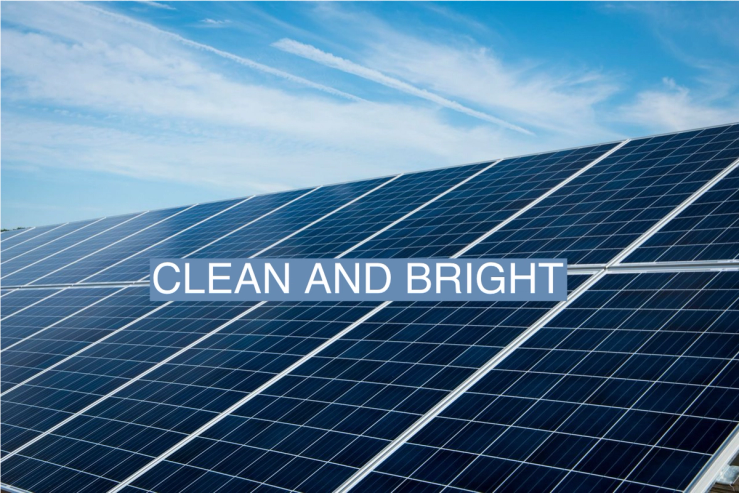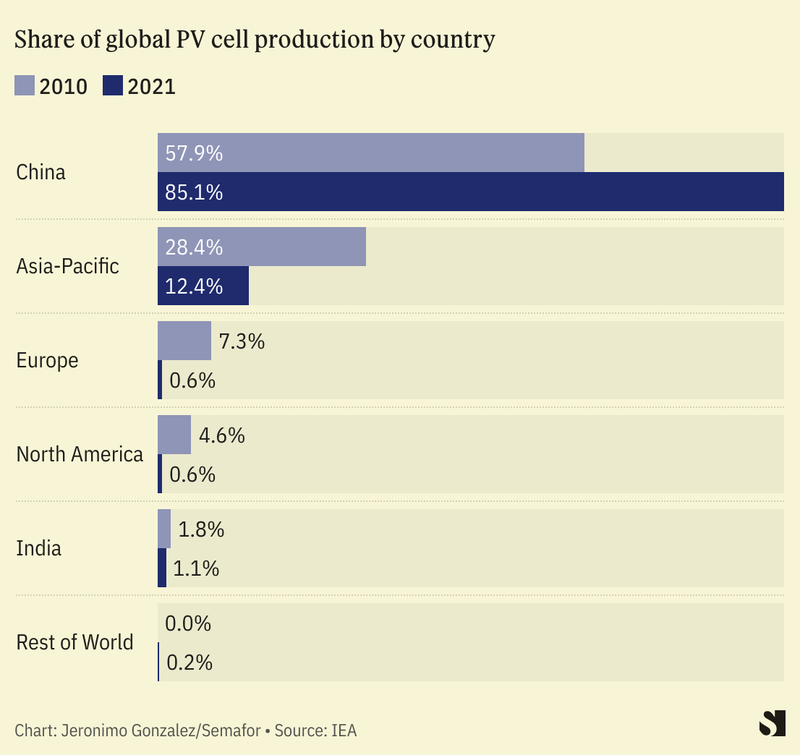
Semafor Signals
US solar panel shipments set a record in 2022
Solar panel shipments in the U.S. grew 10% in 2022 to a record 31.7 million peak kilowatts, data released by the Energy Information Administration shows. The volume of shipments has grown by more than sixfold in the past decade, as the price of photovoltaic cells have fallen, while incentives and subsidies for installing solar panels have increased. Last year, the U.S. produced more than 3% of its electricity through solar energy, a fraction of what it produced from carbon sources such as gas but up more than fourfold compared to 2015 levels.

SIGNALS
Solar panel installations have risen this year as existing tax breaks were expanded and extended with the passing of the Inflation Reduction Act in 2022. The IRA includes almost $100 billion in tax credits. Buyers are now eligible for a 30% tax break on the cost, including for the panels themselves as well as for equipment, installation, and fees. “It’s a great time to be thinking about adding solar• 1 ,” the head of the Energy Department’s Solar Energy Technologies Office said.
The New York Times, At 30%, Solar Panel Tax Credits Are at a High Point for Now
Some, however, have criticized the U.S. government for pursuing seemingly contradictory goals when it comes to solar energy. Earlier this month, the Commerce Department slapped tariffs on solar imports from Southeast Asia — where Chinese solar cell manufacturers have shifted final assembly — raising the costs for solar energy projects that the White House has focused on incentivizing. “The U.S. Department of Commerce is out of step with the administration’s clean energy goals, and we fundamentally disagree with their decision• 2 ,” the Solar Energy Industries Association said.
The Wall Street Journal, Industrial Policy Follies: Solar-Power Edition

Global spending on solar energy this year is expected to outpace spending on oil production for the first time, with vast geopolitical implications. Oil-based economies, including several in the Middle East, could be some of the biggest losers as investment shifts to solar, while China, which has a chokehold on much of the industry, could be the biggest winner. “While it is painful to recognise and may be politically unacceptable to say so• 3 ,” Graham Allison, a professor of government at Harvard wrote, “the brute fact is that in solar, as in other green technologies including electric vehicles, the west’s green future will be red.”
Financial Times, China’s dominance of solar poses difficult choices for the west
Almost 40 gigawatts of solar panels, roughly the same amount installed in all of Europe last year, are gathering dust in warehouses across the continent. Estimates show the figure could reach 100GW by the end of 2023. Labour shortages, material delays and long interconnection queues are largely to blame for the delay in deployment. Once installed, the warehoused panels could help reduce European reliance on Russian gas imports by as much as a billion cubic metres, roughly 4% of the region’s pre-war imports. “This should be the top priority for governments across Europe trying to cut emissions and get Europe off gas rapidly• 4 ,” a campaigner for Beyond Fossil Fuels said.
Energy Monitor, 40GW of solar panels gathering dust in European warehouses

